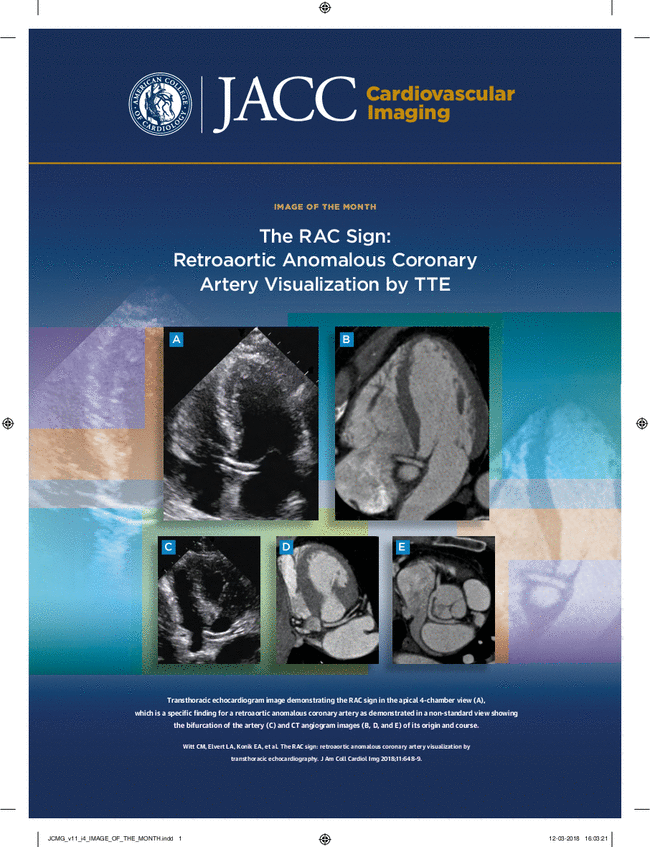预后相关性及左心室整体纵向应变参考范围下限:一项临床验证研究。
IF 12.8
1区 医学
Q1 CARDIAC & CARDIOVASCULAR SYSTEMS
引用次数: 0
摘要
背景:各超声软件供应商的左心室总纵应变(GLS)参考正常范围(LLN)的下限及其与老年和有心衰(HF)风险的无症状患者的预后相关性仍不确定。目的:在这项研究中,作者试图验证每个超声软件供应商的GLS的LLN及其在老年和有HF风险的无症状患者中的预后相关性。方法:为了利用二维斑点跟踪经胸超声心动图识别GLS的LLN,我们对包括健康受试者在内的研究进行了荟萃分析,然后在大量健康受试者中进行了验证研究。为了验证GLS的LLN与预后的相关性,进行了2项验证队列研究,包括年龄≥80岁的老年受试者和有HF风险的左室射血分数保留的无症状门诊患者。结果:荟萃分析包括47项研究,共23,208名健康成人受试者,通过各种超声软件供应商(包括EchoPac, TomTec和QLab)确定GLS的LLN为16%(绝对值)。在包括2217名健康成人受试者的验证队列研究中,GLS截止值为16%也被确定为LLN。结论:本临床验证研究为GLS的LLN(鉴定和验证为16%)及其在老年和有HF风险的无症状门诊患者中的预后相关性提供了重要的临床数据。本文章由计算机程序翻译,如有差异,请以英文原文为准。
Prognostic Relevance and Lower Limit of the Reference Range of Left Ventricular Global Longitudinal Strain
Background
The lower limit of the reference normal range (LLN) of left ventricular global longitudinal strain (GLS) for each ultrasound software vendor and its prognostic relevance in the elderly and in asymptomatic patients at risk for heart failure (HF) remain uncertain.
Objectives
In this study, the authors sought to validate the LLN of GLS for each ultrasound software vendor and its prognostic relevance in the elderly and in asymptomatic patients at risk for HF.
Methods
To identify the LLN of GLS with the use of 2-dimensional speckle-tracking transthoracic echocardiography, a meta-analysis of studies including healthy subjects was conducted, followed by a validation study in a large cohort of healthy subjects. To validate the prognostic relevance of the LLN of GLS, 2 validation cohort studies were carried out, including elderly subjects aged ≥80 years and asymptomatic ambulatory patients with preserved left ventricular ejection fraction at risk for HF.
Results
The meta-analysis, which included 47 studies with a total of 23,208 healthy adult subjects, identified the LLN for GLS at 16% (absolute value) across various ultrasound software vendors, including EchoPac, TomTec, and QLab. In the validation cohort study, which included 2,217 healthy adult subjects, a GLS cutoff of 16% was also identified as the LLN. Concerning the prognostic relevance of the LLN of GLS, a value of GLS <16% was significantly associated with HF hospitalization in asymptomatic ambulatory patients at risk for HF (n = 667; OR within 6 years: 5.1 [95% CI: 1.5-17.0]) and in elderly subjects (n = 159; OR within 2 years: 3.1 [95% CI: 1.1-8.8]).
Conclusions
This clinical validation study provides important clinical data concerning the LLN of GLS (identified and validated at 16%) and its prognostic relevance in the elderly and in asymptomatic ambulatory patients at risk for HF.
求助全文
通过发布文献求助,成功后即可免费获取论文全文。
去求助
来源期刊

JACC. Cardiovascular imaging
CARDIAC & CARDIOVASCULAR SYSTEMS-RADIOLOGY, NUCLEAR MEDICINE & MEDICAL IMAGING
CiteScore
24.90
自引率
5.70%
发文量
330
审稿时长
4-8 weeks
期刊介绍:
JACC: Cardiovascular Imaging, part of the prestigious Journal of the American College of Cardiology (JACC) family, offers readers a comprehensive perspective on all aspects of cardiovascular imaging. This specialist journal covers original clinical research on both non-invasive and invasive imaging techniques, including echocardiography, CT, CMR, nuclear, optical imaging, and cine-angiography.
JACC. Cardiovascular imaging highlights advances in basic science and molecular imaging that are expected to significantly impact clinical practice in the next decade. This influence encompasses improvements in diagnostic performance, enhanced understanding of the pathogenetic basis of diseases, and advancements in therapy.
In addition to cutting-edge research,the content of JACC: Cardiovascular Imaging emphasizes practical aspects for the practicing cardiologist, including advocacy and practice management.The journal also features state-of-the-art reviews, ensuring a well-rounded and insightful resource for professionals in the field of cardiovascular imaging.
 求助内容:
求助内容: 应助结果提醒方式:
应助结果提醒方式:


